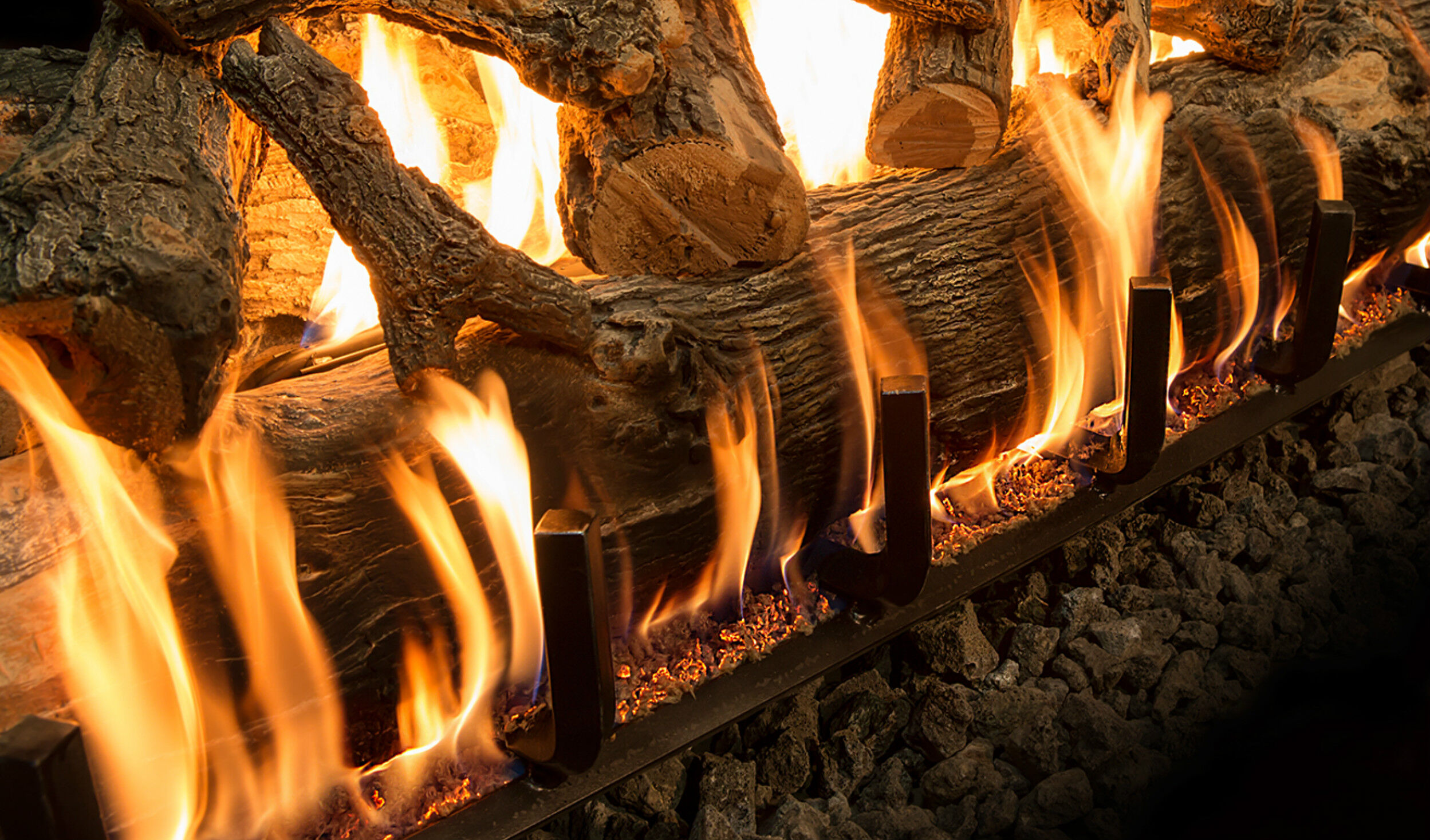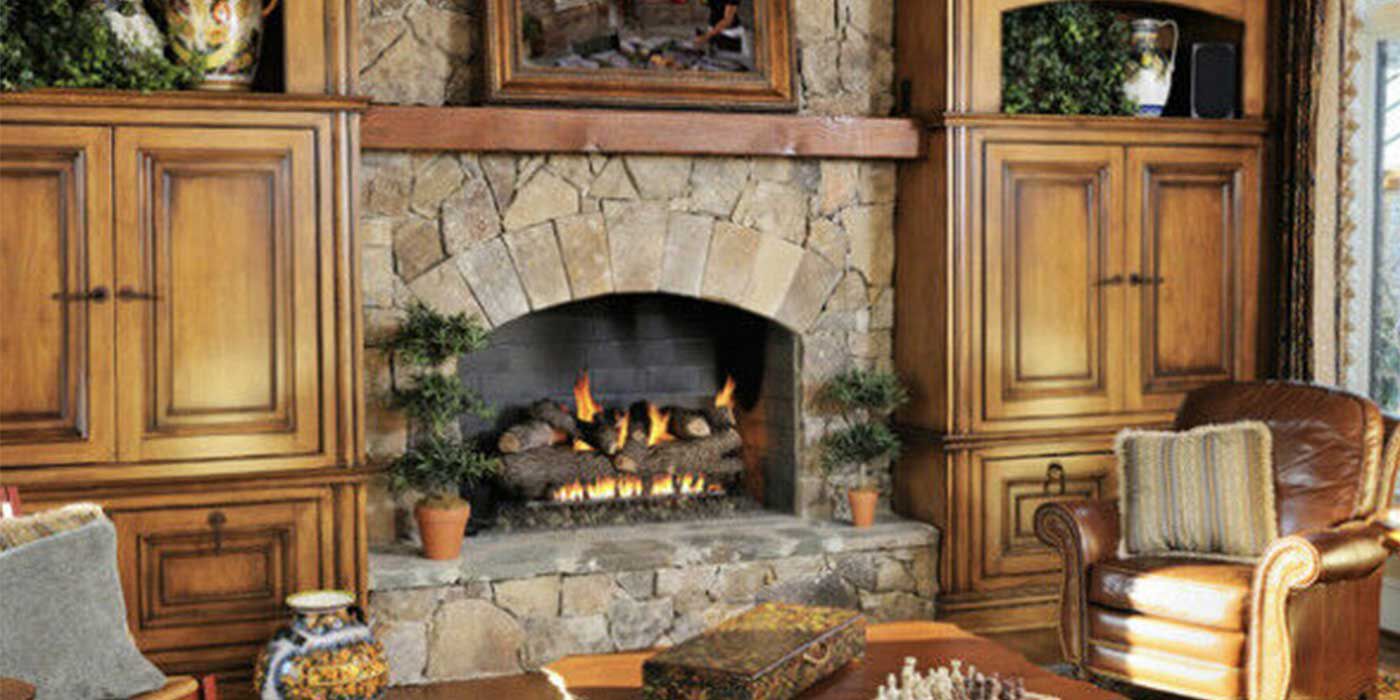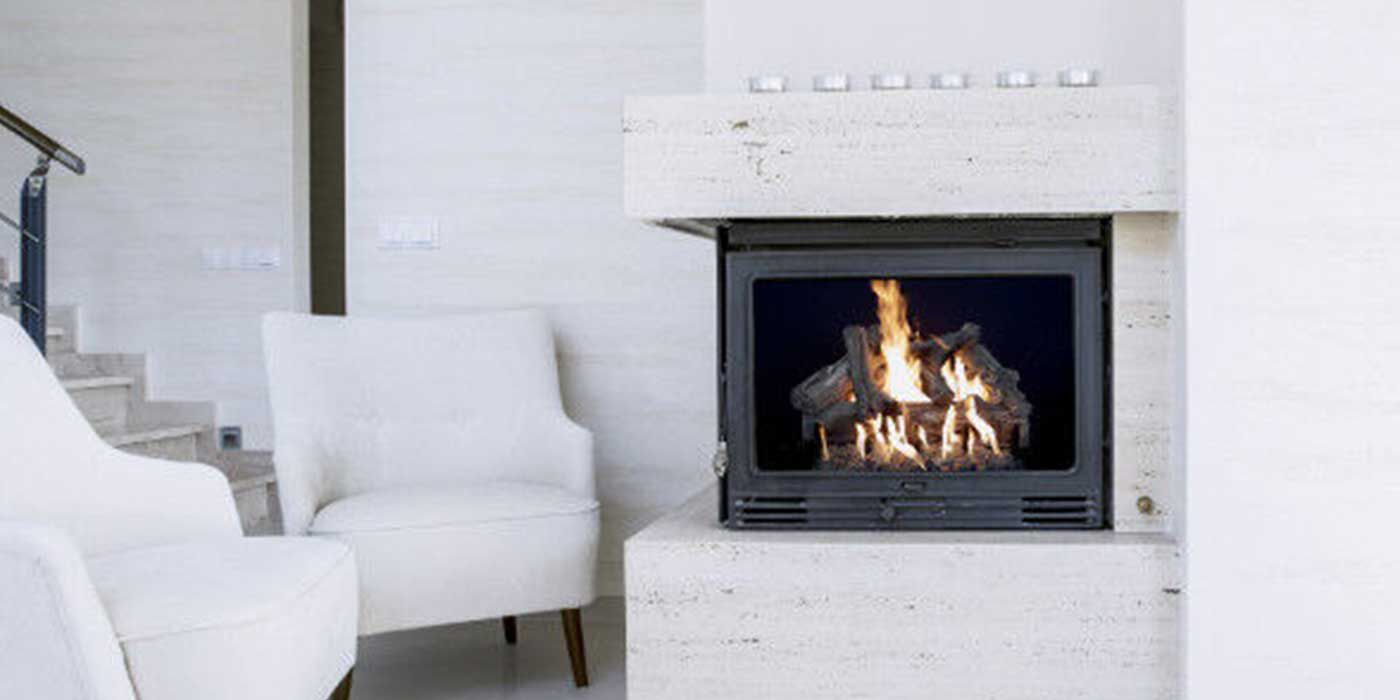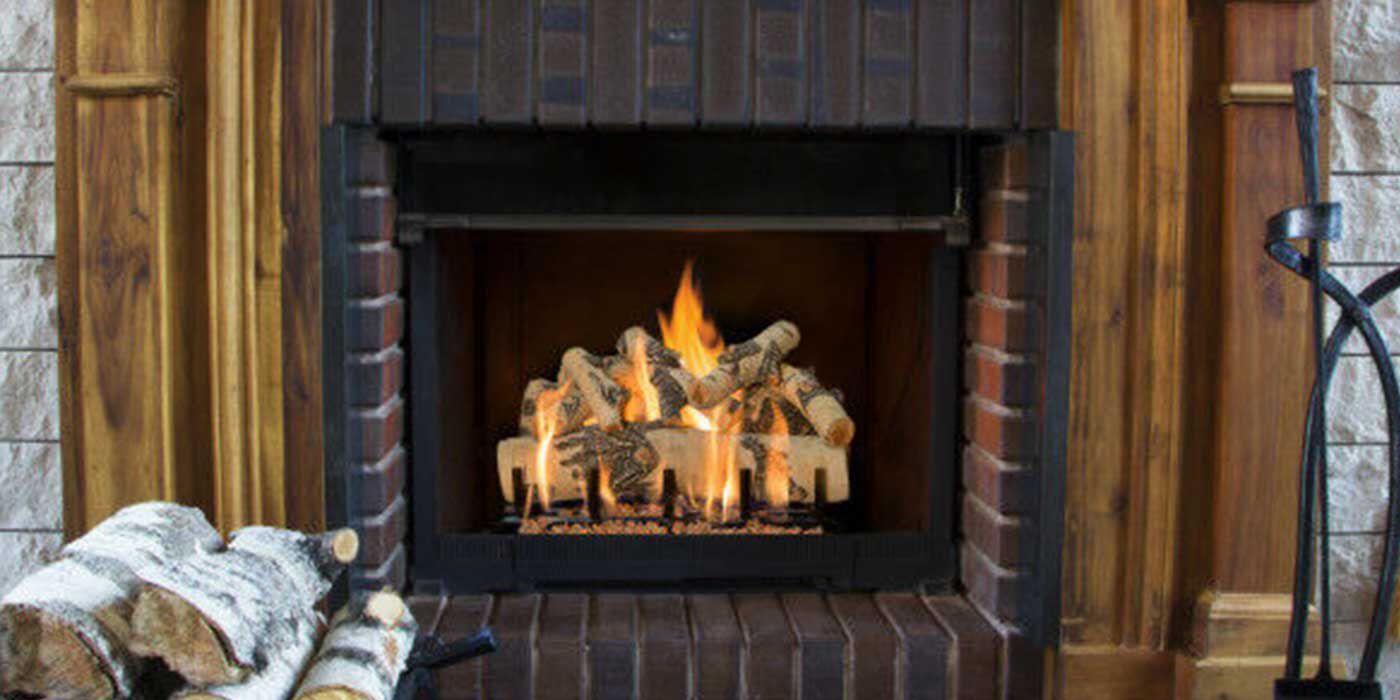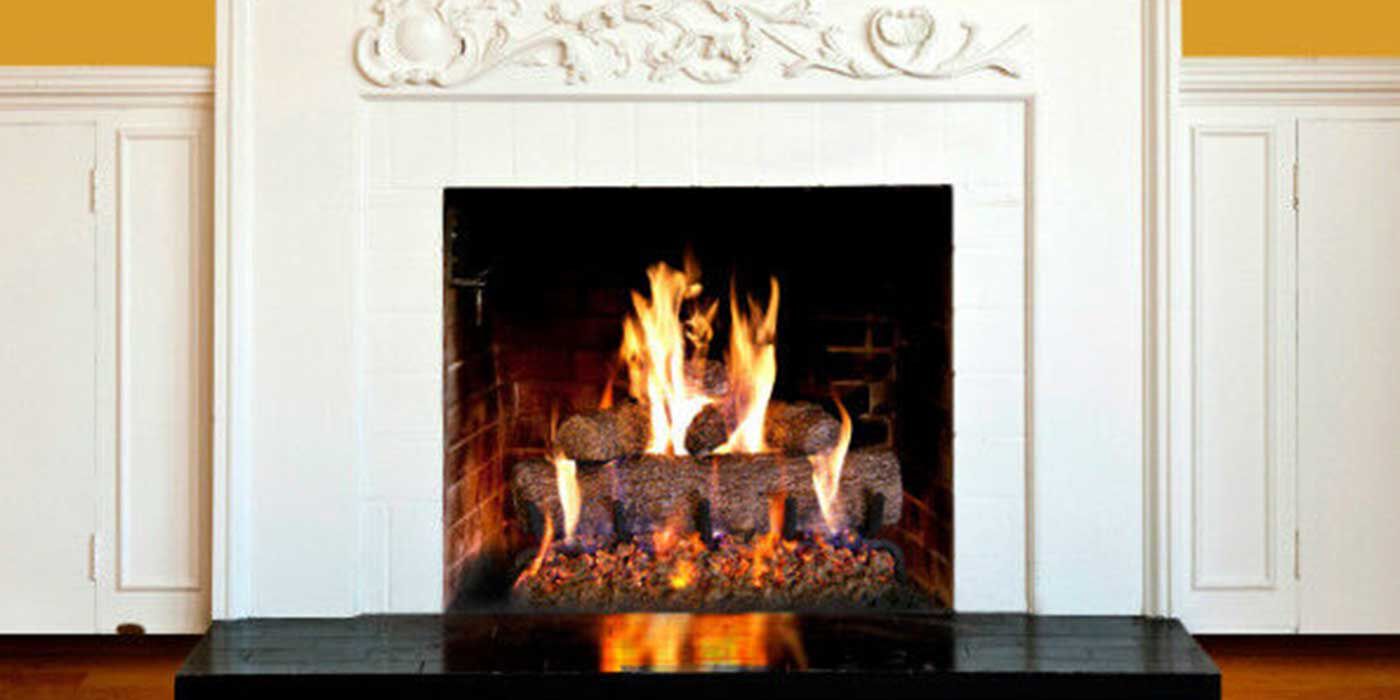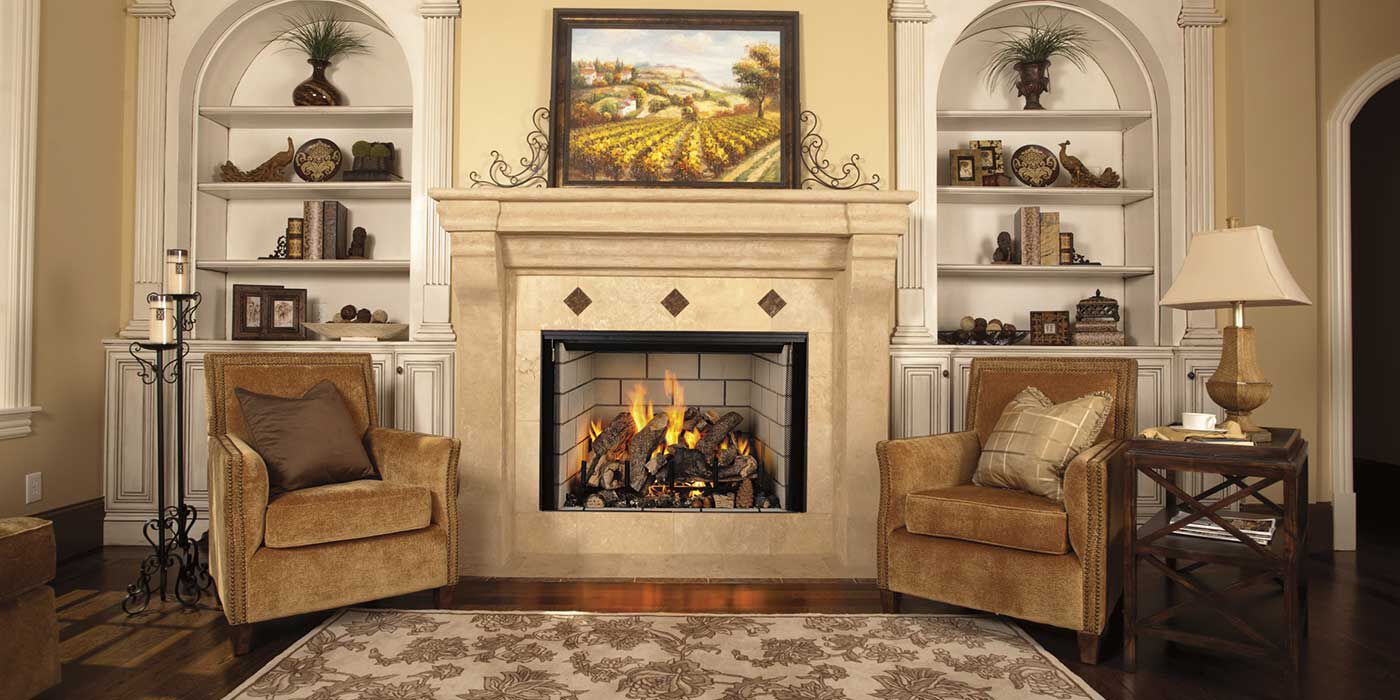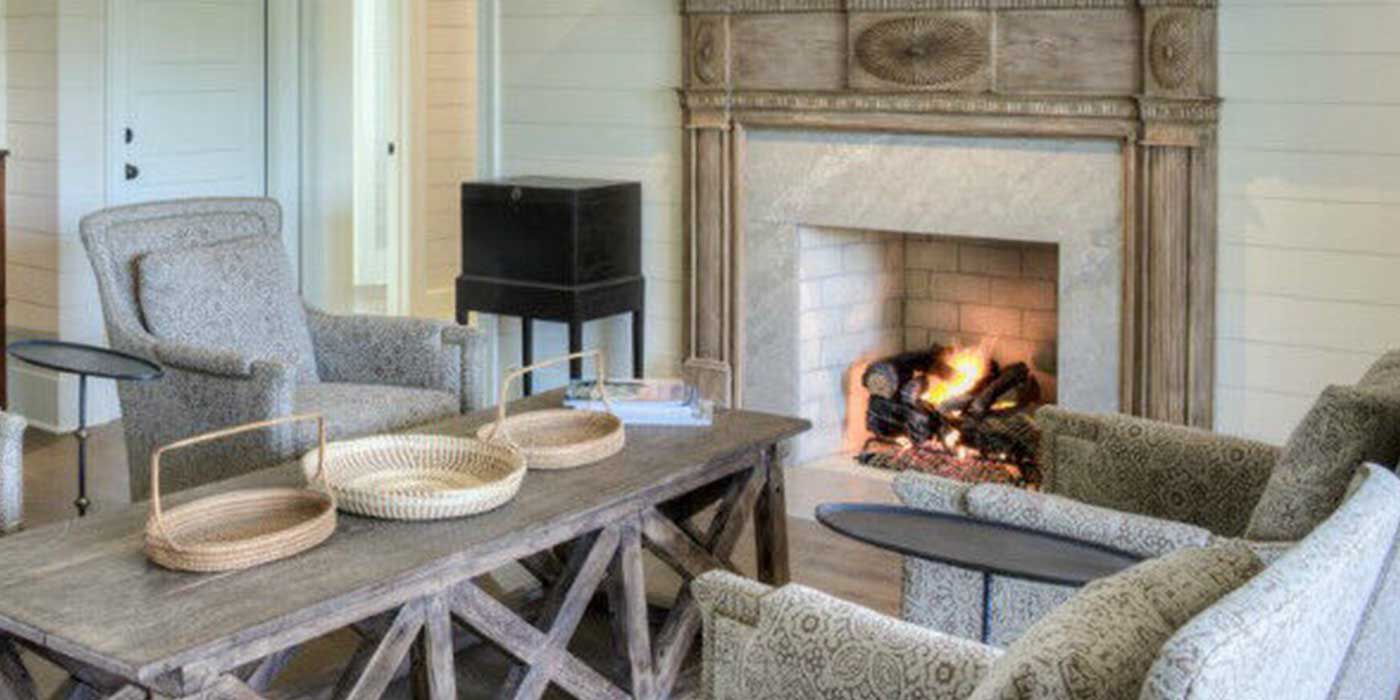By: Tom Regis, NFI Certified Master Hearth Professional
Last Updated: October 7, 2025
No matter the season, there's nothing quite like the comfort of a cozy fire to create a warm and inviting atmosphere in your home. However, the thought of chopping logs, cleaning up ashes, and constantly tending to a real wood fireplace can make the idea less appealing to some homeowners.
That’s where gas logs come in! Offering the charm and ambiance of a real fire without the hassle, gas logs have become an increasingly popular choice. They provide a clean, efficient, and low-maintenance alternative to traditional wood burning fireplaces, making it easier than ever to enjoy the flickering flames and warmth that a fire brings.
In this article, we'll explore the numerous advantages of gas logs and why they might be the perfect addition to your home.
Simple to Use
Gas logs are a great way to enjoy a hassle-free fire. They are simple to use and won't require the time and effort it takes to start and maintain a wood burning fire. They produce heat instantly, and best of all, you don’t have to buy, haul, chop, or store wood logs.
If you’re looking for a wood alternative that produces little to no emissions, gas logs may be the perfect option for you.
Ventless gas logs don’t require any type of venting or chimney system and operate with the chimney damper closed, so all of the heat produced is circulated back into the room.
They are almost 100% efficient and come with advanced safety features — like an automatic shut-off — to ensure the oxygen in your room won’t get depleted.
For homes with existing fireplaces — Direct Vent or wood — with a functioning flue, chimney, or venting system, Vented gas logs are the best option. They provide efficient heating while maintaining excellent air quality.
Pro Tip:
Gas logs can come in very handy during a power outage since they’re have a consistent and reliable fuel source and don’t require electricity to work. They are just as effective and efficient during a power outage as they are on a normal day, making them a great backup heating solution.
Easy to Maintain
Compared to wood burning fireplaces, gas log sets require little to no maintenance to keep them up and running.
Wood burning fireplaces need to be checked regularly to make sure the chimney is free from creosote buildup, the firebox is clean, and the ashes need to be removed after every use.
If you’re using Vented gas logs, you’ll still need to have the chimney inspected and swept once a year. A properly maintained venting system helps ensure cleaner-burning performance and optimal heat output
Your gas logs will also need to be cleaned periodically to remove creosote buildup, especially if you’re using Propane.
Over time some parts may need to be replaced on your log set, but there’s virtually no daily maintenance compared to a wood burning fireplace.
Simply turn your log set on when you’re ready to use it and switch it off when you’re done. This simplicity not only saves time but also promotes energy efficiency compared to traditional fireplaces.
Realistic Look
Gas logs offer you an extremely realistic replacement for wood logs. Some are cast from actual wood logs and hand-painted to bring out the texture, color, and pitting found in the natural wood grain and tree bark.
Vented gas log sets come with expansive ember beds made from Rockwool to add even more lifelike appeal to your hearth. Rockwool ember beds flicker and glow the same way wood embers do in a dying fire, providing the same ambiance and depth.
No Mess to Clean Up
Gas logs burn very cleanly and don’t create any smoke or ash typically associated with burning wood. Because they’re cleaner-burning, they help maintain better indoor air quality and reduce buildup inside your chimney, flue, or venting system.
You don’t have to tend to the fire, clean up ash, or wait for the fire to die out completely before leaving your house.
You also don’t have to keep a stockpile of wood on-hand, eliminating the possibility of termites and critters getting into your home.
Affordable Upkeep
The costs of maintaining a safe wood burning fireplace, along with the cost of wood can add up quickly.
Gas logs are a much more affordable option since you don’t have to pay for constant upkeep, cleaning, wood, and fire starters.
Between wood, Natural Gas, and Propane, Natural Gas is typically the most affordable option.
Saves Time
Not only are gas logs a cheaper way to enjoy a great fire, but they also take less time to set up and maintain.
You can simply turn on the gas logs with the push of a button, then switch them off when you’re done. Some gas log sets even come with hand-held remote controls, allowing you to start and adjust the fire from the comfort of your seat.
Wood burning fireplaces take time to prepare, maintain, and cool down. Several hours of your day can be spent just on the process of stacking wood in the hearth, stoking the fire, waiting for it to burn down, and extinguishing it properly. You’ll also have to remove the ash once it’s cooled, which can be pretty labor-intensive and messy.
Pro Tip:
Gas logs give you the ability to enjoy a fire for any period of time, whether it’s short or long while eliminating the potential risk of hot ash and sparks escaping from the hearth area and igniting a fire.
Gas Log Safety Tips
- Make sure the gas logs you select for your fireplace are pre-approved by both the fireplace and gas log manufacturers.
- Check the local code requirements before installing any type of gas log set in your home. Some cities and states have restrictions regarding Ventless gas logs and the type of chimney required for Vented sets.
- Fire is fire, whether it’s fueled by wood or gas, so you’ll still need to have fully functional smoke and carbon monoxide detectors installed in your home.
- Have your gas logs inspected once a year to make sure the connections are tight and the gas lines and hoses are in good repair. If you have a vented set, you’ll need to have your chimney inspected and cleaned at least once per year.
Prefer to Listen?
FAQs
Vented logs produce a more realistic flame, but less heat than Ventless logs. Vented sets also require a working chimney or venting system to expel combustion gases. Ventless logs burn clean and don’t require any kind of venting at all, making them more flexible to install.
Not exactly. Direct Vent fireplaces and Ventless or Vent-Free fireplaces work differently and will require a specific type of log set. For example, vent-free gas logs are made for approved ventless systems, while vented log sets need to be installed in a fully functional firebox with a working chimney. Always check your fireplace type before purchasing.
You can choose from traditional log sets, like oak or birch, or go with more modern designs like driftwood. Leading brands like Grand Canyon Gas Logs, Napoleon, Superior, Empire, Monessen, and RH Peterson (makers of Real Fyre logs) offer a wide variety of options to match different home styles.
While both increase fireplace functionality and reduce heating costs, they are two different types of products. Gas log sets are a set of ceramic logs and a burner system that sits inside your fireplace, while gas fireplace inserts are metal boxes that are “inserted” into the firebox and finished with a decorative surround. Both gas log sets and gas fireplace inserts offer ease of use and let you transform an existing fireplace.
Yes, we recommend hiring an NFI Certified Master Hearth Professional to install and service any gas fire feature — from gas fireplaces to gas logs, gas fireplace inserts, gas fire pits, and more. Working with any kind of gas appliances can be dangerous and there are serious safely risks if you aren’t experienced.
We're Here to Help
Have more questions about installing a gas fire pit? We’d love to help! Call our team of NFI certified experts today at 800.919.1904.
More Resources
Head over to our Gas Logs Buying Guide to learn even more about gas logs!
Find out if a Vented or Ventless log set is right for you!
Read our Gas Log FAQ page for answers to the most commonly asked questions about gas logs.
 |
Thomas Regis has been a Technical Sales Representative at Woodland Direct for four years. An NFI-Certified expert, Thomas effortlessly directs his clients toward the perfect products, offering essential installation and safety advice. He's tackled projects of all sizes, from backyard fire pits to custom indoor fireplaces. He has even helped Amy Adams, owner of the Tennessee Titans, find a new fireplace for her home! Beyond his professional achievements, Thomas actively participates in community service projects and enjoys spending time on the basketball court. Call him or one of our experts in fire at 800.919.1904. |
